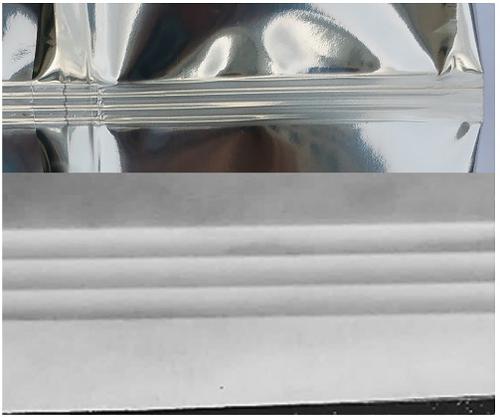当前位置:
X-MOL 学术
›
Packag. Technol. Sci.
›
论文详情
Our official English website, www.x-mol.net, welcomes your feedback! (Note: you will need to create a separate account there.)
The sealing behavior of new mono‐polyolefin and paper‐based film laminates in the context of bag form‐fill‐seal machines
Packaging Technology and Science ( IF 2.6 ) Pub Date : 2020-11-01 , DOI: 10.1002/pts.2544 Marek Hauptmann 1, 2 , Willi Bär 1 , Ludwig Schmidtchen 1 , Norbert Bunk 3 , Daniel Abegglen 4 , Alexey Vishtal 4 , Yves Wyser 4
Packaging Technology and Science ( IF 2.6 ) Pub Date : 2020-11-01 , DOI: 10.1002/pts.2544 Marek Hauptmann 1, 2 , Willi Bär 1 , Ludwig Schmidtchen 1 , Norbert Bunk 3 , Daniel Abegglen 4 , Alexey Vishtal 4 , Yves Wyser 4
Affiliation

|
Heat sealing behavior of mono‐polyolefins and paper‐based materials is drastically different from conventional multilayer plastic laminates. This paper presents the effect of sealing conditions on Hot‐Tack and Cold‐Tack for an oriented polypropylene (OPP)‐based polyolefin laminate with either polyethylene (PE) or cast polypropylene (CPP) sealing layer and two different barrier paper materials carrying a thin acrylic copolymer sealing layer. The investigations include pressure, temperature, time, jaw pattern, and climate conditions (moisture). It is shown that the mono‐polyolefins reach comparable Hot‐Tack and Cold‐Tack ranges compared with the reference polyethylene terephthalate (PET)‐aluminum (Al)‐PE laminate. The CPP laminate exhibits a narrow sealing window near the range in which shrinkage is observed. While for the polyolefins temperature plays the main role, the sealing of paper materials turned out to be dependent on pressure, time, and moisture content in paper. Due to a rupture through the polymer thin coating, the Cold‐Tack is dominated by a delamination of paper and coating. Consequently, the Cold‐Tack is drastically lower than with PET‐Al‐PE laminate. Monopolypropylene films exhibit extremely narrow sealing window, which shall be taken into the design consideration of bag form‐fill‐seal (FFS) machines. Polymer coated paper can be potentially used at high‐speed FFS; however, special attention shall be paid to moisture content control and filling.
中文翻译:

新型单聚烯烃和纸基薄膜层压板在制袋填充灌装机中的密封性能
单聚烯烃和纸基材料的热封性能与传统的多层塑料层压板完全不同。本文介绍了密封条件对定向聚丙烯(OPP)基聚烯烃层压材料的热粘性和冷粘性的影响,该层压材料具有聚乙烯(PE)或浇铸聚丙烯(CPP)密封层以及两种薄的阻隔纸材料丙烯酸共聚物密封层。调查内容包括压力,温度,时间,下颚模式和气候条件(湿度)。结果表明,与参考聚对苯二甲酸乙二酯(PET)-铝(Al)-PE层压板相比,单聚烯烃达到了相近的Hot-Tack和Cold-Tack范围。CPP层压板在观察到收缩的范围附近具有狭窄的密封窗口。虽然对于聚烯烃温度起主要作用,但事实证明纸材料的密封取决于纸中的压力,时间和水分含量。由于聚合物薄涂层的破裂,Cold-Tack主要是纸张和涂层的分层。因此,Cold-Tack大大低于PET-Al-PE层压板。单聚丙烯薄膜的密封窗口非常狭窄,应将其用于袋装填塞(FFS)机器的设计中。聚合物涂层纸可能会在高速FFS上使用。但是,应特别注意水分含量的控制和填充。Cold-Tack主要是纸张和涂层的分层。因此,Cold-Tack大大低于PET-Al-PE层压板。单聚丙烯薄膜的密封窗口非常狭窄,应将其用于袋装填塞(FFS)机器的设计中。聚合物涂层纸可能会在高速FFS上使用。但是,应特别注意水分含量的控制和填充。Cold-Tack主要是纸张和涂层的分层。因此,Cold-Tack大大低于PET-Al-PE层压板。单聚丙烯薄膜的密封窗口非常狭窄,应将其用于袋装填塞(FFS)机器的设计中。聚合物涂层纸可能会在高速FFS上使用。但是,应特别注意水分含量的控制和填充。
更新日期:2021-01-07
中文翻译:

新型单聚烯烃和纸基薄膜层压板在制袋填充灌装机中的密封性能
单聚烯烃和纸基材料的热封性能与传统的多层塑料层压板完全不同。本文介绍了密封条件对定向聚丙烯(OPP)基聚烯烃层压材料的热粘性和冷粘性的影响,该层压材料具有聚乙烯(PE)或浇铸聚丙烯(CPP)密封层以及两种薄的阻隔纸材料丙烯酸共聚物密封层。调查内容包括压力,温度,时间,下颚模式和气候条件(湿度)。结果表明,与参考聚对苯二甲酸乙二酯(PET)-铝(Al)-PE层压板相比,单聚烯烃达到了相近的Hot-Tack和Cold-Tack范围。CPP层压板在观察到收缩的范围附近具有狭窄的密封窗口。虽然对于聚烯烃温度起主要作用,但事实证明纸材料的密封取决于纸中的压力,时间和水分含量。由于聚合物薄涂层的破裂,Cold-Tack主要是纸张和涂层的分层。因此,Cold-Tack大大低于PET-Al-PE层压板。单聚丙烯薄膜的密封窗口非常狭窄,应将其用于袋装填塞(FFS)机器的设计中。聚合物涂层纸可能会在高速FFS上使用。但是,应特别注意水分含量的控制和填充。Cold-Tack主要是纸张和涂层的分层。因此,Cold-Tack大大低于PET-Al-PE层压板。单聚丙烯薄膜的密封窗口非常狭窄,应将其用于袋装填塞(FFS)机器的设计中。聚合物涂层纸可能会在高速FFS上使用。但是,应特别注意水分含量的控制和填充。Cold-Tack主要是纸张和涂层的分层。因此,Cold-Tack大大低于PET-Al-PE层压板。单聚丙烯薄膜的密封窗口非常狭窄,应将其用于袋装填塞(FFS)机器的设计中。聚合物涂层纸可能会在高速FFS上使用。但是,应特别注意水分含量的控制和填充。


























 京公网安备 11010802027423号
京公网安备 11010802027423号